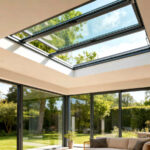
Ornamental vs. Functional: Designing Your Victorian Greenhouse
Should your Victorian greenhouse be a stunning glass and steel structure for wedding events or a practical growing space? This guide compares ornamental vs. functional designs, helping you choose the perfect balance of beauty and utility. Discover frame options, layout ideas, and smart features for your dream greenhouse. Get inspired for your next garden project today!

A Victorian greenhouse is more than just a garden structure—it’s a statement piece. Whether you want an elegant glass and steel structure for hosting greenhouse wedding events or a practical space for year-round gardening, design choices matter. This guide explores how to balance beauty and functionality in your greenhouse project.
1. The Allure of a Victorian Greenhouse
The classic Victorian greenhouse features intricate glass and steel designs, offering both durability and timeless charm. These structures became popular in the 19th century, blending aesthetics with plant cultivation. Today, they serve two main purposes:
✔ Ornamental – A decorative garden centerpiece, perfect for events.
✔ Functional – A working greenhouse for growing plants efficiently.
2. Designing an Ornamental Victorian Greenhouse
If your goal is elegance—perhaps for a greenhouse wedding event or as a garden showpiece—focus on these design elements:
a. Aesthetic Features
-
Decorative ironwork – Scrolls, finials, and arched frames enhance visual appeal.
-
Stained glass accents – Adds color and sophistication.
-
Classic cresting – Ornamental ridge details for a regal touch.
b. Ideal Uses
-
Weddings & events – A romantic glass and steel structure for ceremonies.
-
Tea rooms or lounges – A stylish retreat with lush greenery.
-
Garden focal point – Enhances landscape design without heavy planting.
c. Maintenance Considerations
-
Requires regular glass cleaning to maintain clarity.
-
Decorative metal may need anti-rust treatment.
3. Designing a Functional Victorian Greenhouse
If you rank plant growth over looks, optimize your Victorian greenhouse for practicality:
a. Key Structural Choices
-
Durable glazing – Twin-wall polycarbonate or tempered glass for insulation.
-
Automatic ventilation – Roof vents and louvers for temperature control.
-
Sliding doors – Easy access for tools and plants.
b. Layout Tips for Growers
-
Raised beds & benches – Maximize planting space.
-
Shelving & hanging racks – Use vertical space efficiently.
-
Watering systems – Drip irrigation saves time.
c. Best Plants for a Working Greenhouse
-
Vegetables (tomatoes, peppers)
-
Tropical plants (citrus trees, orchids)
-
Herbs (basil, mint, rosemary)
4. Blending Ornamental & Functional Design
Can you have both beauty and practicality? Absolutely! Here’s how:
✔ Elegant but efficient framing – Choose steel with decorative touches but sturdy construction.
✔ Clear glass for light, with UV protection – Ensures plant health while looking pristine.
✔ Flexible space – Design areas for both growing and entertaining.
Example: A greenhouse for wedding events that doubles as a winter plant sanctuary.
View more design guidelines by Victorian greenhouse
5. Choosing the Right Glass & Steel Structure
The materials make all the difference:
a. Glass Options
-
Standard horticultural glass – Affordable, but less insulation.
-
Tempered safety glass – Stronger, ideal for event spaces.
-
Decorative stained glass – Beautiful, but reduces light for plants.
b. Steel Frame Types
-
Powder-coated steel – Resists rust, low maintenance.
-
Wrought iron – More decorative but needs upkeep.
6. Real-Life Examples
a. The Ornamental Approach
-
A wedding venue greenhouse with crystal-clear glass, chandeliers, and climbing roses.
-
A conservatory-style lounge with seating and ornamental plants.
b. The Functional Approach
-
A year-round vegetable producer with automated shading and heating.
-
A hobbyist’s exotic plant haven with optimized humidity control.

Designing Your Victorian Greenhouse
7. Final Decision: What’s Right for You?
Ask yourself:
-
“Will this be a showpiece or a growing space?”
-
“Do I need it for events (like weddings) or just gardening?”
-
“What’s my budget for maintenance?”
Conclusion: Create Your Dream Victorian Greenhouse
Whether you want a breathtaking greenhouse for wedding events or a high-yield glass and steel structure for plants, your Victorian greenhouse can be tailored to your needs. Balance aesthetics with functionality, and you’ll have a stunning yet practical garden asset.
Ready to design yours? Start planning today!
Why Choose Us?
- As the first manufacturer in China to introduce the Victorian conservatory design from Europe, we have 36 years of production experience since 1988, and our products are distributed in 68 countries.
- We have a professional team of 8 conservatory design engineers and 60 production workers. We are equipped with 2 hot-dip galvanizing machines, 2 steel shot blasting machines, and 1 spray line.
- Our professional design team can provide theoretical calculation data support for wind pressure resistance, earthquake resistance, and snow resistance of large-scale steel structure conservatories.
- Strict quality control. 8 inspection stages: raw material inspection, cutting and blanking size inspection, welding quality inspection, hot-dip galvanizing quality inspection, spray quality inspection, assembly quality inspection, and packaging quality inspection. Ensuring smooth assembly of the products, no rust, no leakage, and compliance with customer national standards.
- We cooperate with many well-known architectural design companies worldwide.
- Customized services. We can customize according to customer designs and dimensions. We also provide supporting facilities such as electric sunshades and air conditioners.
- We offer installation dispatch services, inspection services, and free replacement of parts. We also present high-value exquisite gifts.
- Video factory tour. You can view the entire production process.
Ready to Bring Your Greenhouse to Life?
Share your ideas and we'll create a custom solution just for you. Your email address will not be published. Required fields are marked *




